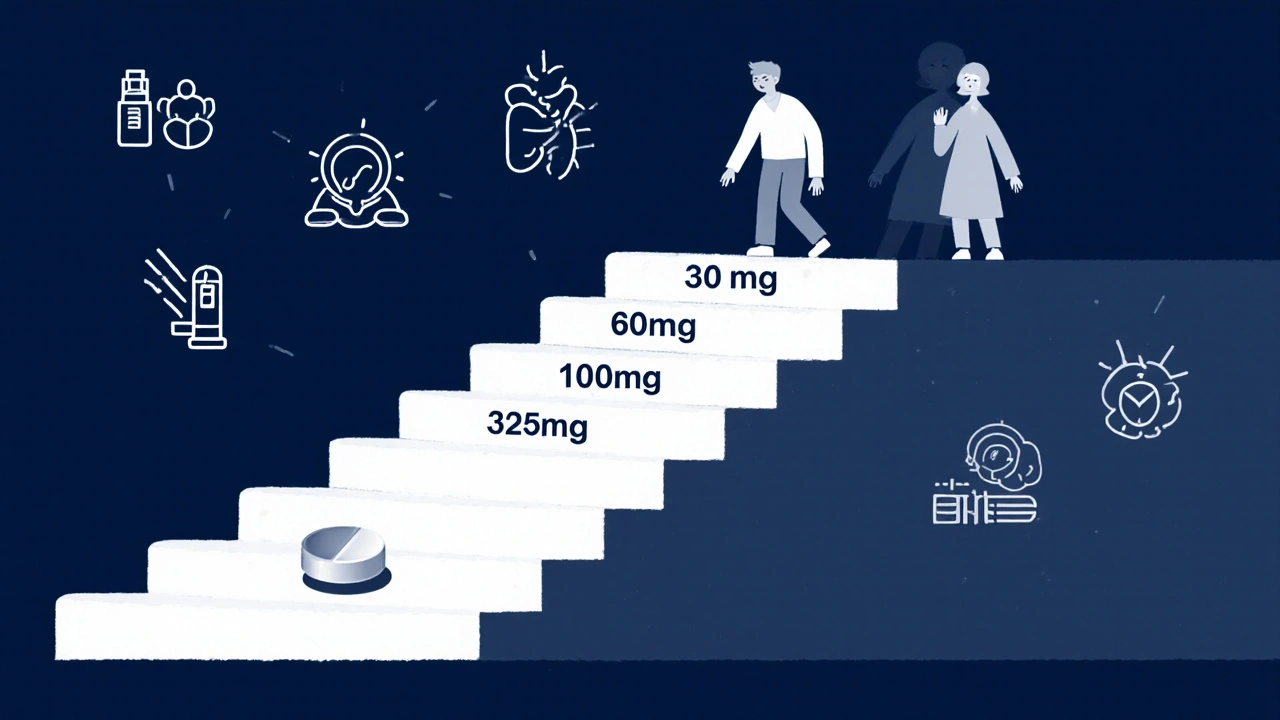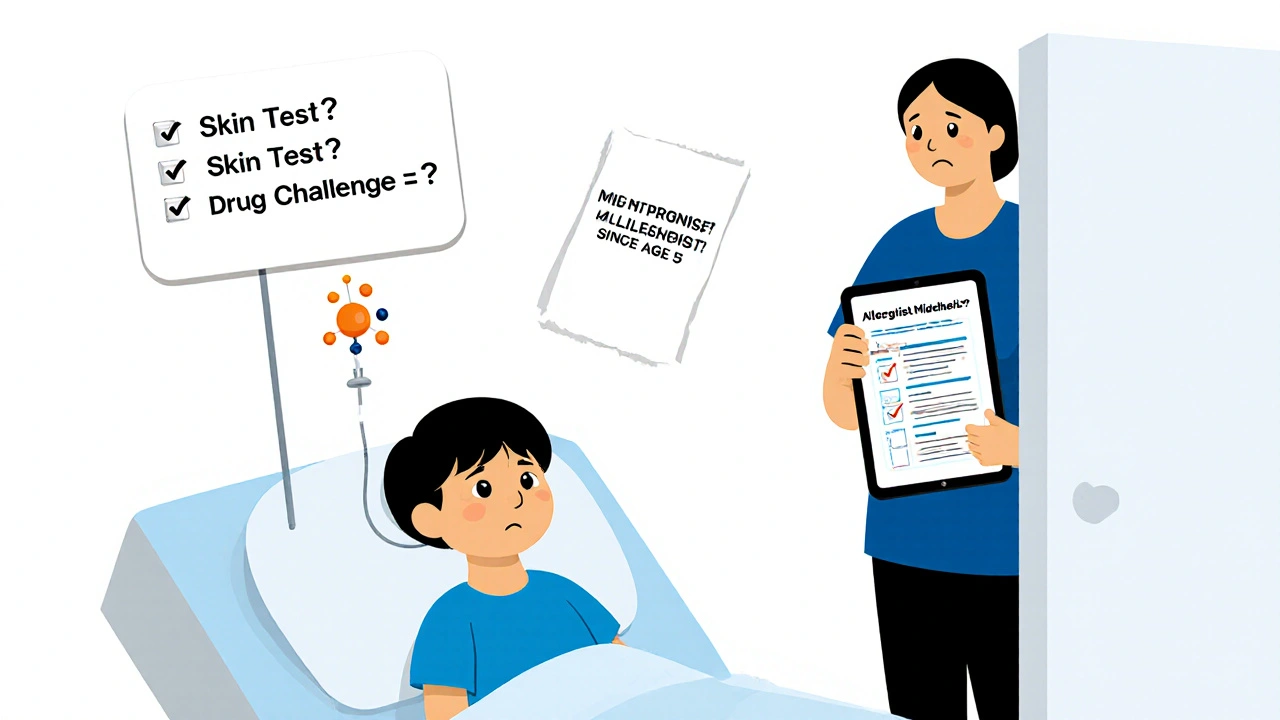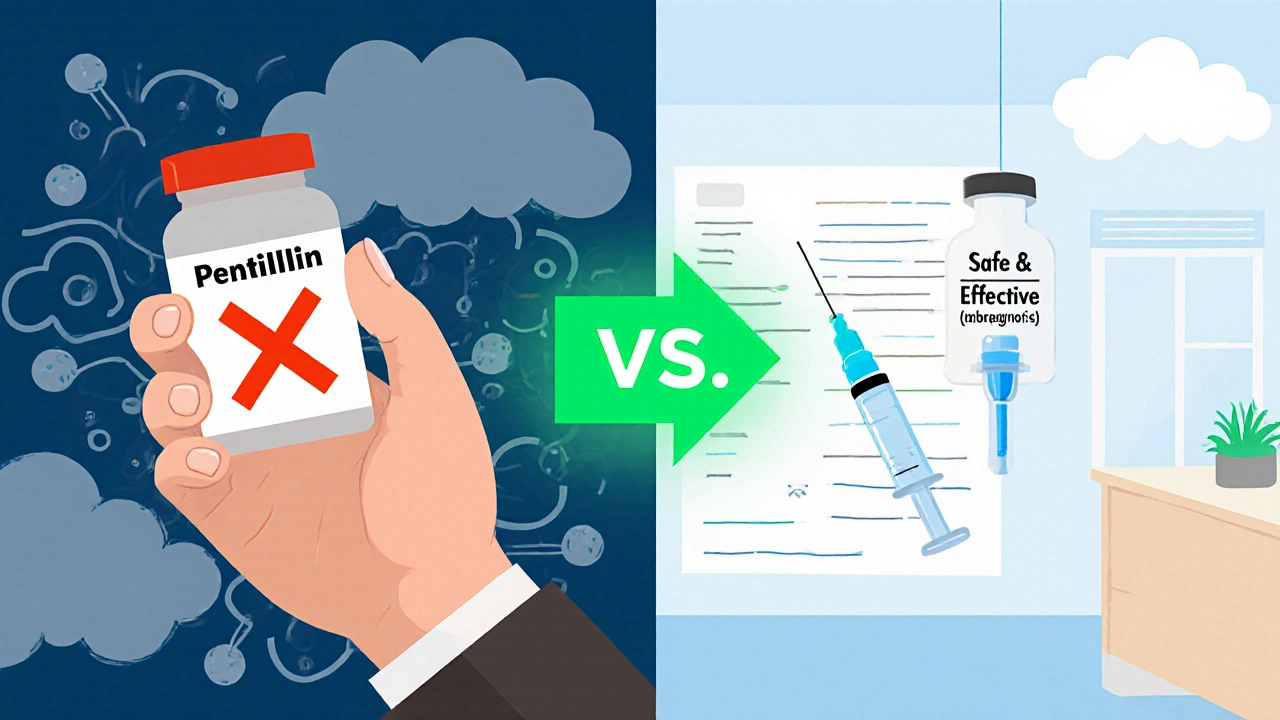More than 10% of people in the U.S. say they’re allergic to penicillin. But here’s the catch: up to 90% of them aren’t. Many people outgrow their allergy, misremember a rash from childhood as an allergy, or confuse side effects like nausea or diarrhea with true immune reactions. The result? Millions are unnecessarily avoiding the safest, cheapest, and often most effective antibiotics - and instead getting stronger, more expensive drugs that can harm their gut, increase antibiotic resistance, and raise hospital bills by hundreds of dollars per admission.
What Makes a Drug Allergy Real?
Not every bad reaction to a drug is an allergy. True drug allergies involve your immune system. They’re not just side effects. They’re your body mistaking a medication for a threat and launching a response - sometimes severe. The most dangerous are immediate-type reactions, which happen within an hour of taking the drug. These include hives, swelling of the face or throat, trouble breathing, wheezing, drop in blood pressure, or anaphylaxis. Penicillin and other beta-lactam antibiotics (like amoxicillin, cefazolin, ceftriaxone) are the most common triggers. NSAIDs - think ibuprofen, naproxen, aspirin - are another major group. But here’s something surprising: NSAID allergies usually don’t work the same way as penicillin allergies. Penicillin reactions are often IgE-mediated, meaning your body makes specific antibodies that trigger mast cells to release histamine. NSAID reactions are more often pharmacological - they happen because the drug blocks certain enzymes, leading to an imbalance in inflammatory chemicals. That’s why NSAID reactions can look similar (hives, swelling) but require different testing and different desensitization approaches.Penicillin Allergy: The Most Misdiagnosed Condition in Medicine
If you’ve been told you’re allergic to penicillin, chances are you’ve been mislabeled. Skin testing is the gold standard for confirming a true penicillin allergy. It involves tiny pricks and injections of penicillin derivatives - not just the drug itself, but also major and minor determinants like PPL (penicilloyl-polylysine) and MD (major determinant). But here’s the key detail: PPL alone is unreliable. Up to 70% of people who react only to PPL can safely take penicillin later. That’s why experts now recommend testing with both major and minor determinants, followed by a drug challenge if skin tests are negative. A negative skin test? Then you’re given a full dose of amoxicillin under supervision. If you don’t react, you’re not allergic. Period. This isn’t just theory - it’s practice. Hospitals that do this routinely find that 95% of patients labeled penicillin-allergic can safely take penicillin after testing. And when they do, their infections clear faster, they’re less likely to get resistant infections like C. diff, and their hospital stays are shorter.NSAID Allergies: More Complex Than They Appear
NSAID allergies are trickier. Unlike penicillin, there’s no reliable skin test or blood test for them. Diagnosis is based on history - did you get hives or swelling within an hour of taking aspirin or ibuprofen? Did it happen every time? Did you have asthma or nasal polyps along with it? That last part matters. People with Samter’s Triad (asthma, nasal polyps, and NSAID sensitivity) have a unique, lifelong intolerance that requires long-term management. For those with confirmed NSAID allergy, desensitization isn’t just an option - it’s often the only way to keep using essential pain relief or prevent heart attacks (if you need daily aspirin). The protocol is different from penicillin. Instead of a 4- to 8-hour IV process, it’s usually oral and slower. You start with 30 mg of aspirin, then increase every few hours: 60 mg, 100 mg, 150 mg, then 325 mg. It can take a full day. But once you’re desensitized, you can take daily aspirin without reaction - as long as you take it every day. Stop for more than 48 hours, and you lose tolerance. You’ll need to go through the whole process again.
Desensitization: How It Works and When It’s Needed
Desensitization isn’t a cure. It’s a temporary override. Your immune system is tricked into tolerating the drug - just for that one treatment. Once you stop the drug, the tolerance fades. You’ll need to go through it again if you need the same drug next time. The process is carefully controlled. For IV drugs like penicillin or chemotherapy agents, you start with a dose so tiny it’s 1/10,000th of the full amount. Every 15 to 20 minutes, you get a slightly bigger dose - doubling or tripling each time - until you reach the full therapeutic level. This can take 4 to 8 hours. For some beta-lactams, like cefazolin, an accelerated 2-hour and 15-minute protocol has been proven safe and effective. You need to be in a hospital or specialized clinic. Emergency equipment - epinephrine, oxygen, IV fluids - must be immediately available. Nurses and doctors must be trained to spot early signs of reaction: flushing, itching, throat tightness, a drop in blood pressure. If things get serious - like laryngeal edema or uncontrolled low blood pressure - the process stops. No exceptions.Who Gets Desensitized? Not Everyone
Desensitization isn’t for every allergic person. It’s only done when:- You have a confirmed immediate-type reaction (within an hour) to a drug
- There’s no safe, effective alternative
- The drug is critical - like penicillin for a life-threatening infection, or paclitaxel for cancer

Children and Desensitization: The Gap in Care
Most desensitization protocols were designed for adults. Kids? They’re often treated with the same rules - even though their immune systems work differently. A 2019 review found that pediatric allergists rarely have clear guidelines for desensitizing children with drug allergies. Yet kids with chronic infections, cancer, or cystic fibrosis need these drugs too. The good news? Desensitization works in children. The bad news? Few hospitals have pediatric-specific protocols. That’s why experts say allergists need to team up with infectious disease doctors and oncologists - especially in children’s hospitals. Without that collaboration, kids get stuck with broader antibiotics or delayed treatments.The Bigger Picture: Why This Matters Beyond One Patient
When we mislabel penicillin allergies, we don’t just hurt the individual. We hurt the system. Hospitals use more expensive, broader-spectrum antibiotics. That leads to more drug-resistant infections. It increases costs. It worsens outcomes. A single mislabeled allergy can add $500 or more to a hospital bill - and that’s just for one admission. More than that, it’s a failure of diagnostics. We’ve treated penicillin allergy like a label you get at age 5 and never question. But allergies change. Immune systems adapt. What was dangerous at 8 might be harmless at 38. The solution isn’t more drugs. It’s better testing. More skin tests. More drug challenges. More desensitization programs. And more training for doctors who don’t specialize in allergies - because most patients never see an allergist. Their primary care doctor, ER physician, or oncologist needs to know when to refer, when to test, and when to consider desensitization.What You Should Do If You Think You’re Allergic
If you’ve been told you’re allergic to penicillin or an NSAID, here’s what to do:- Write down exactly what happened - symptoms, timing, how many times it occurred
- Ask your doctor: “Was this tested? Was it a true allergy, or just a side effect?”
- If you’ve never been tested, ask for a referral to an allergist
- Don’t assume you’re allergic forever - especially if it happened decades ago
- If you need a drug like penicillin or aspirin for a serious condition, ask about desensitization
Can you outgrow a penicillin allergy?
Yes, many people do. Studies show that up to 80% of people who had a penicillin allergy in childhood lose it within 10 years. Even if you had a severe reaction as a kid, you might still be able to take penicillin safely as an adult - if you get tested. Skin testing and a drug challenge are the only reliable ways to know for sure.
Is a rash always a sign of penicillin allergy?
No. Many rashes from penicillin are not allergic. They’re viral rashes that happen to appear while you’re taking the drug - especially in kids with mononucleosis or other infections. A true allergic rash is usually itchy, raised, and appears within hours of taking the drug. Non-allergic rashes are often flat, not itchy, and appear days later. Only a specialist can tell the difference.
Can you desensitize to NSAIDs like ibuprofen?
Yes, but only under strict medical supervision. Desensitization to NSAIDs is usually done with aspirin, starting at very low doses and slowly increasing. It’s not a one-time fix - you have to take the drug daily to maintain tolerance. If you stop for more than 48 hours, you’ll need to start over. This is mainly used for people who need daily aspirin for heart health or those with Samter’s Triad.
Is desensitization safe?
When done correctly, yes. Desensitization has a high success rate - over 90% for penicillin and many chemotherapy drugs. But it’s not risk-free. Reactions can happen during the process. That’s why it’s only done in hospitals with emergency equipment and trained staff. The procedure is stopped immediately if there’s any sign of a serious reaction.
Why don’t more doctors offer desensitization?
Because most doctors aren’t trained in it. Allergy specialists know the protocols, but primary care doctors, ER staff, and even oncologists often don’t. There’s also a lack of standardized guidelines, especially for kids. But awareness is growing. Hospitals like Brigham and Women’s have published clear protocols, and more institutions are starting desensitization programs - especially for cancer and infection cases where alternatives are limited.
